Push-ups for ‘Lola’?
MANILA, Philippines—
Two recent articles in the New York Times caught my eye: one by Jane Brody on exercise as a “powerful medicine” and the other, by Tara Parker-Pope, about push-ups. Brody and Parker-Pope are among an emerging breed of journalists who do fine research and reporting on health and science.
Their articles on exercise didn’t come from new research but they did summarize recent research on exercise for the elderly and for the chronically ill. The consensus is that the benefits of exercise outweigh its risks for “Lolo” [Grandfather], “Lola” [Grandmother] and the chronically ill, including people who recently had heart attacks.
In the Philippines, we tend to keep the sick and the elderly in bed, or on a chair. It’s a culturally defined “sick role” that keeps people passive and pampered. The Western emphasis on independence spills over into health care: the sick have privileges only for a short period, and are expected to help themselves become well.
I often hear Filipinos in the United States talking about “cruelty” in American hospitals. “Imagine,” one new mother wailed to me one time, “my doctors made me walk the day after I had my Caesarean ... Not only that, they made me drink orange juice.” (Many Asians prefer to avoid cold drinks and sour foods when they’re sick.)
Dependency
My Canadian brother-in-law, who specializes in rehabilitation medicine, noticed a similar cross-cultural difference several years ago when he visited one of our military hospitals and was shocked to find that many patients were getting too little physical exercise and therapy, even if their injuries dated back several months.
It happened that my sister, who is an occupational and speech therapist, had also been observing patients here and noticed how the elderly tended to be kept in bed, often because Lolo and Lola would complain and ask that they just be allowed to sit or lie around.
What we see then is a combination of respect for the elderly and the sick, combined with pity, and a certain privileging: “Oh, you’re too sick (or too old) to walk, so just stay put and we’ll carry you.” That is actually harmful, not just creating dependency but dulling the patient’s physical, mental and emotional capacities. The worst thing that can happen is keeping them in bed, in front of a TV and DVD player.
In contrast, mild exercise sets off a cascade of chemical changes in the body, including the release of endorphins, “feel-good” chemicals that reduce pain and, well, just make you feel good. UP’s oval now has a lane just for bikers and joggers, and I enjoy watching people going round and round and round. From their facial expressions you can see they’re blissfully high.
Occasionally, in the oval, I see people on wheelchairs, sometimes with someone pushing them from behind. Now if people can do that on their wheelchairs, why can’t the less debilitated not join in and do a bit of brisk walking? That’s cultural too: we avoid walking.
Brody’s article on exercise as a powerful medicine reiterates the protective benefits of exercise, lowering the risks for, hold your breath, heart attack, stroke, hypertension, diabetes, obesity, depression, dementia, osteoporosis, gallstones, diverticulitis, falls, erectile dysfunction, peripheral vascular disease and various cancers (including, this might interest elderly men, prostate cancer).
The protective role can be a form of prevention for those who’ve never had a particular illness. Or, for those who have suffered an ailment, exercise can prevent recurrence or a worsening of an illness. It might even become a form of rehabilitation, helping the body to repair damaged tissues and body functions. For example, people who have had ministrokes or “transient ischemic attacks” benefit from exercise because this improves blood flow to the brain, and reduces the risk for more of these ministrokes, or a major heart attack.
Muscle memory
Parker-Pope’s article on the push-up was a perfect complement to Brody’s. Older Filipinos who had to go through ROTC will remember the push-up more as a punishment. Others associate push-ups with the young and the very fit. But Americans have been dazzled in recent years by Jack LaLanne, a pioneer in fitness programs, who is now 93 and likes to appear on TV to deliver, effortlessly, several push-ups. (When he was younger, he could do this on his fingertips!)
Push-ups are now being pushed as good exercise for the elderly, and the young as well, who have abandoned this cost-free exercise in favor of aerobics. Parker-Pope writes that push-ups are the “ultimate barometer of fitness,” testing the whole body, particularly muscles around the arms, chest, abdomen, hips and legs. The push-ups also check on how fit your heart and respiratory systems are. And if they’re not quite in condition, the push-ups, even starting with one, will help.
There’s another important reason for getting the elderly to do push-ups: The exercise helps them to deal with falls, which is a major cause of injury, and even death, among their age group. Push-ups develop body strength, so a Lolo or Lola who does push-ups is more stable and less likely to fall. Even more interesting, if they do push-ups, they develop muscle memory that can save them if they do fall.
Muscle memory? When you repeat certain physical activities, your mind is trained as well to the point where you perform those activities subconsciously. Push-ups train our muscles to automatically reach out and break a fall, using our hands or elbows. I have elderly relatives who, because of frequent falls, have learned to automatically twist their bodies as they fall, to avoid hitting the ground with their head. Push-ups can further enhance such skills.
If you’re worried about fractured wrists or arms, remember that the push-ups do strengthen the forelimbs, so if a Lola who does push-ups falls, her hands and arms might be strong enough for the cushioning effect, with minor injuries. And really now, even if they do fracture a limb in the process, it’d be better than a head injury, or a hip fracture.
Do check with a physician, a physical therapist or a gym instructor, on appropriate exercises for the elderly, or for a chronically ill patient, but be guided as well by common sense. Try and see how many push-ups you can do without too much strain. And start walking more; you’re probably already doing it anyway in the mall.
* * *
Comments to mialto:mtan@inquirer.com.ph


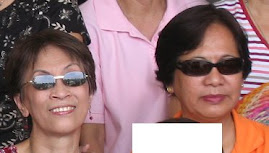

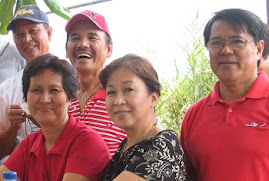
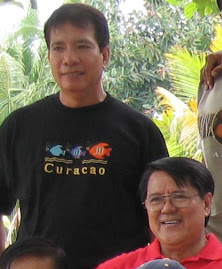

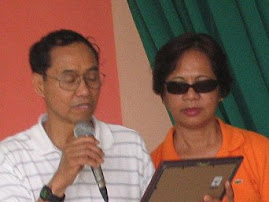
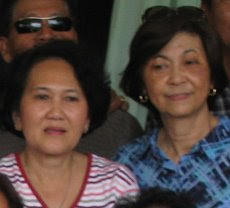

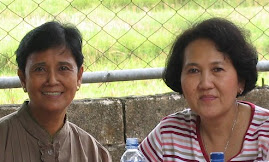








1 comment:
Jo, more reading and then posting of those articles. Pareho kayo ni Azon walang ginagawa kundi magbasa. Iba talaga ang mga retired. I enjoy reading in our blogsite what you two are sharing with us. Thanks a lot to both of you. Miss you. Take care and God Bless.
Post a Comment